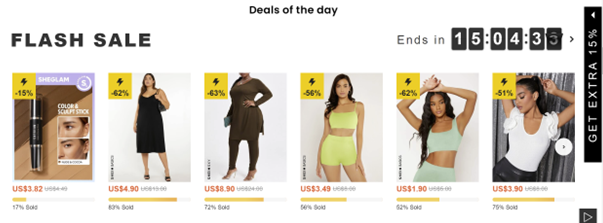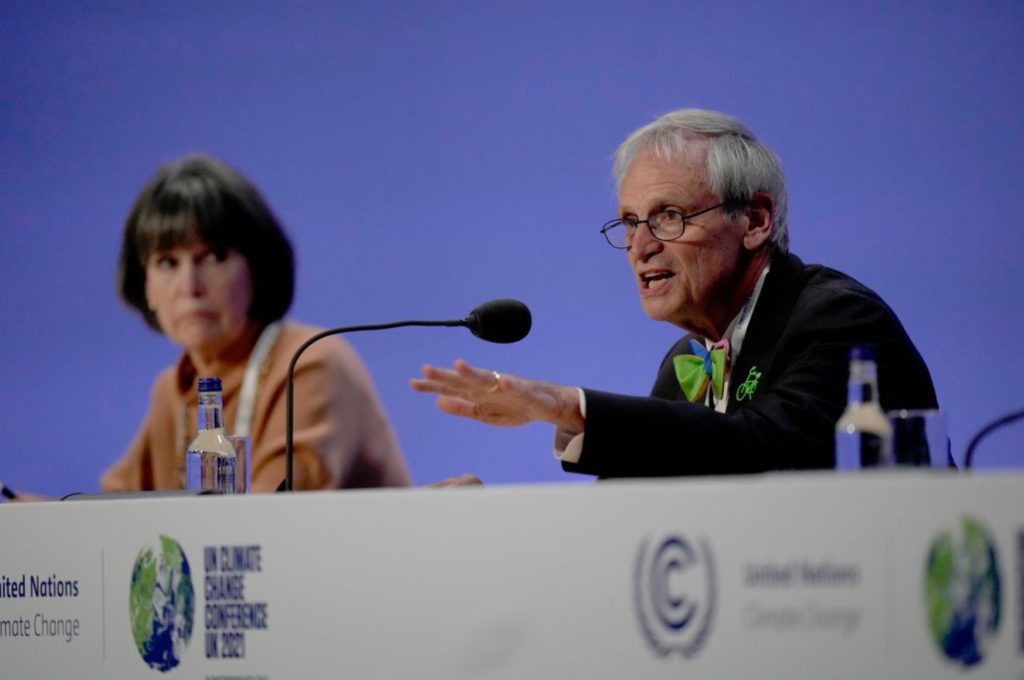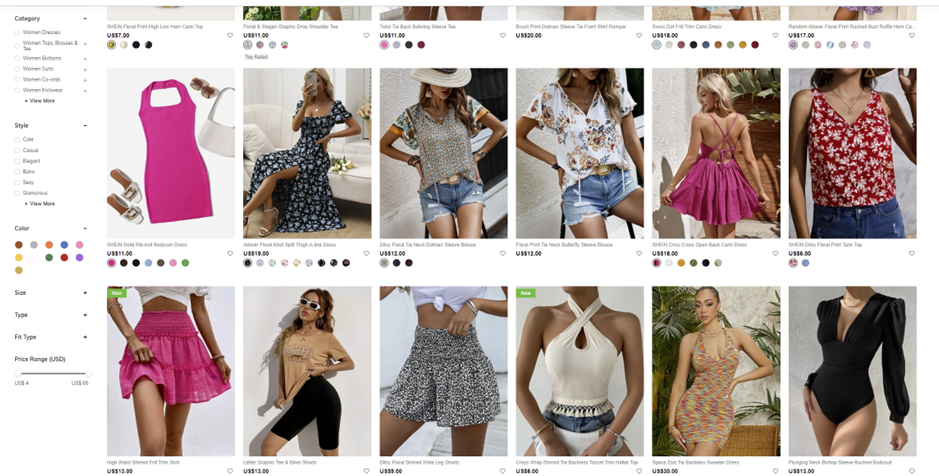
The China-based company ships its incredibly cheap clothing directly to consumers, allowing it to dodge U.S. trade enforcement. It also stands accused of a whole lot of other bad practices.
Forget Forever 21. H&M? That’s so 10 years ago. And don’t even get me started on Abercrombie and Fitch.
The hottest name in fast fashion right now is Shein, an online retailer that specializes in shipping clothing directly from Chinese factories to consumers in the United States and other Western countries. Shein’s profile has risen dramatically over the past few years, growing by word-of-mouth via social media giant TikTok (another Made in China joint) and is especially popular among Gen Z. Wired reported in May that the company claims 28% of the U.S. fast fashion market, and is valued at $100 million, higher than the combined worth of mainstays H&M and Zara.
One of the chief reasons for Shein’s popularity is that it can churn out ultra trendy clothing exceptionally quickly and sell it on the cheap. Like, really, really cheap. A quick peruse of the company’s U.S. site finds most items are priced under $20; many come in at under $10. And Shein’s flash sales and coupon deals bring prices down even further.
But everything comes at a cost — and Shein’s too-good-to-be-true prices are indeed too good to be true.

Shein stands accused of a whole host of bad behavior, but arguably the worst is how it makes its goods. For starters, there’s a strong possibility that the company is reliant on forced labor for at least some of its products. The brand manufactures its clothing via a network of thousands of suppliers throughout China. Around 80-85% of the cotton in Chinese-made apparel comes from Xinjiang, where the State Department says a genocide is taking place and forced labor is used to make everything from clothing to solar panels to vinyl flooring to car batteries. But the evidence is so strong that forced labor is being used to harvest cotton that companies like Patagonia have stopped sourcing cotton from China entirely.
It’s worth noting that Shein has lied about its labor practices in the past, which doesn’t inspire confidence.
Even if Shein isn’t *technically* using forced labor — which is probably unlikely, given what we know about China’s apparel manufacturing industry — it’s safe to conclude that the people making all those cheap clothes are working in poor conditions. A November 2021 investigation by Public Eye, for example, found people who make clothing for Shein working “11, 12, sometimes 13 hours a day, mostly 7 days a week, with no premium for overtime.”
Elizabeth L. Cline of the advocacy organization Remake told Wired:
Cline told me that when companies such as Shein brag about how efficient they are, her thoughts leap to the people, often women, whose bodies and minds wear out so that the company can maximize revenue and minimize costs. ‘They’re the ones who have to be flexible and work all night so the rest of us can press a button and have a dress delivered to our door for $10,’ she said.
Remake, by the way, grades apparel companies on their ethical practices. Shein scored a 0 out of 150.
There are efforts underway in the United States to encourage companies to move sourcing away from Xinjiang, given the prevalence of forced labor in the region. The Uyghur Forced Labor Prevention Act went into effect on June 21, officially banning any imports of goods from Xinjiang unless importers can prove those products aren’t made with forced labor.
But as Fortune outlined this week, Shein’s direct-to-consumer model means it will likely be able to dodge the enforcement of the Uyghur Forced Labor Prevention Act. Indeed, cotton from Xinjiang has been banned from U.S. shores since January 2021, but still is finding its way in thanks to convoluted supply chains. Fortune reported:
“Experts doubt whether any retailer can genuinely comply with the new law, let alone Shein with its outsize network of Chinese suppliers. Shein relies on a web of 6,000 factories, all based in China, far larger than H&M’s roster of 1,519 factories or Nike’s 533.”
Shein already has been able to get around other U.S. trade enforcement actions, including “Section 301” tariffs on Chinese imports, via that direct-to-consumer model.
According to U.S. law, tariffs are waived for packages valued under $800 in what’s known as the “de minimis” rule (meaning “too small to be meaningful”). The idea behind that rule is to spare people the hassle of dealing with tariffs for small purchases, like tourists bringing home souvenirs from trips abroad.
But online retailers like Amazon have exploited de minimis to dodge tariffs, and de minimis shipments have skyrocketed in recent years — the U.S. imported $67 billion in de minimis shipments in 2020, up from $40.5 million in 2012. Chinese imports accounted for $46 billion, according to the Wall Street Journal. All those shipments make it hard for customs officials to enforce trade laws — and that’s if they can find them. Here’s Fortune:
“The de minimis regulation requires minimal data on shipping forms, meaning the true identity of the sender is easy to obscure. The parcels Shein sends via air cargo can list individual customers or third party customs brokers as the ‘importer,’ and the warehouse or logistics firm that last touched the parcel—rather than Shein itself—as the ‘seller.’ E-commerce platforms’ reliance on third-parties makes it hard for customs agents to obtain ‘adequate information on the [true] identity’ of the seller, says Lawrence Friedman, partner at Barnes Richardson who focuses on trade disputes with the U.S. Customs and Border Protection.”
Rep. Earl Blumenauer (D-Ore.) introduced legislation in January that would prohibit goods from non-market economies (like China) and on the U.S. Trade Representative’s Priority Watch List (like China) from using de minimis, along with other measures designed to reform the process. That bill was included in the House version of the competitiveness legislation, but not the Senate — it remains unclear if it will ultimately make it in the final package currently being negotiated by both chambers.

While Shein’s labor practices are perhaps its most egregious behavior, the company also has been heavily criticized for its environmental record. Its entire business model is simply unsustainable.
Fast fashion long has been criticized for its impact on the planet, as consumers buy items on the cheap, wear them a few times, and discard them. Not only is the process of making all of those throw-away clothes damaging — it takes 3,000 liters of water to make one cotton skirt — but the clothing itself is also bad for the environment, containing plastic microfibers that pollute the ocean. That plastic also means the clothing won’t decay when clothing ends up in a landfill, and most of the clothing thrown away by Americans ends up in landfills.
Every apparel brand is contributing to the problem, of course. But Shein takes things to a whole new level.
According to Wired, the company updates its website with 6,000 new styles every day. In “a recent 12-month period, the Gap listed roughly 12,000 different items on its website, H&M had about 25,000, and Zara had some 35,000. Shein, in that period, had 1.3 million,” Wired reports. That’s a whole lot of cheap, easy-to-throw-away clothing.
Shein’s clothing isn’t just bad for the planet, it also is potentially toxic. Canadian watchdog Health Canada found that a jacket for toddlers contained nearly 20 times the amount of lead that is safe for children, while a purse contained about five times more lead than what’s considered safe.
When the nonprofit Green America issued its latest Toxic Textiles Scorecard, Shein failed in every category; Good On You also ranked Shein as “the worst of the worst“:
SHEIN gets our lowest score of ‘We Avoid’ for the planet. Aside from using a couple of eco-friendly materials here and there, there is no evidence the brand is taking any meaningful action to reduce its substantial impact on the environment. From hazardous chemicals to carbon emissions to microplastics, SHEIN is making zero effort. On top of that, brands mass-producing such cheap, poorly-made clothing perpetuate a throwaway fashion culture simply by existing. SHEIN would have to do a complete 180 to raise its score in this area.
Shein’s clothing itself isn’t just problematic for its environmental impact. The company also stands accused of ripping off others’ designs, from big names like Ralph Lauren to independent artists.
Levi Strauss, Dr. Martens, and Stussy are among the brands that have sued Shein, alleging that the company stole their intellectual property. Just this week, Florida-based artist Magdalena Mollman, known professionally as Maggie Stephenson, filed a $100 million lawsuit against Shein claiming copyright infringement. Images shared on social media, meanwhile, showed striking similarities between designs from Shein and fellow fast fashion player Zara.
British artist Vanessa Bowman was stunned when she received an email from a fan showing one of her pieces placed on a jumper sold by Shein.
“They didn’t remotely bother trying to change anything,” she told The Guardian. “The things I paint are my garden and my little village: it’s my life. And they’ve just taken my world to China and whacked it on an acrylic jumper.”
Bowman ultimately decided not to sue Shein. “[A]ll I want to do is paint in my studio; I don’t want to get involved with lawyers and could feel myself getting really stressed. It was a bit David and Goliath and I was completely overwhelmed,” she said.

Shein is indeed a goliath, and unless de minimis reform legislation is passed and properly enforced, it probably isn’t changing anytime soon. But that doesn’t mean consumers don’t have options.
Shein has fast fashion giants on the ropes because of its direct-to-consumer model, which cuts out the middleman and eliminates the hassle and expense of running physical retail stores. It’s sort of how Borders put independent booksellers out of business, only to be crushed by online retailers like Amazon.
Independent booksellers are now making a comeback — and there’s a growing number of ethical apparel manufacturers mounting their own return, using the same direct-to-consumer model that Shein is using.
American Giant and American Roots are among the Made in America apparel brands who have perfected the model while investing in sustainable practices and paying their workers a fair wage; American Roots is proudly union-made. Christy Dawn, Reformation, and Outerknown also make at least some products in the United States and have sustainable practices; Winter Water Factory makes a variety of eco-friendly kids clothing in New York.
Now, I work for the Alliance for American Manufacturing, so of course I am here to tout the greatness of buying American-made clothing. I truly believe in buying American and can give you a whole host of reasons why doing so is better than ordering a cheap T-shirt from places like Shein. I strongly encourage you to check out these and other Made in USA brands if you are looking for better buying options.
But it’s unfair to expect consumers alone to fix this system, which — thanks to decades of poor U.S. policy choices — is set up for bad players like Shein to succeed.
The lopsided trade deficit with China — which came about thanks to U.S.-led efforts to admit China to the World Trade Organization in 2001 — led to the loss of 3.7 million jobs between 2001 and 2018, along with tens of thousands of closed factories.
There are trade laws in place designed to help level the playing field for U.S. producers, but some policymakers go out of their way to weaken them and benefit Chinese companies. For example, there are currently calls to remove tariffs on Chinese imports, which would do nothing to lower consumer prices but give Chinese companies yet another unearned advantage.
As U.S. Trade Representative Katherine Tai pointed out on Wednesday, those tariffs were put in place to address China’s trade cheating, including things like intellectual property theft, which Shein stands accused of. We must be willing to enforce our trade laws, full stop.
After all, American manufacturers and workers already are at a disadvantage, because companies in China don’t abide by the same labor and environmental practices that American manufacturers do.
All of this bad policy means it costs far more to make clothing in the United States, and that means American-made clothing costs more for consumers. Now, the quality is usually much higher — my American Giant hoodie has lasted for nearly 10 years now — but there’s no question the cost premium gives importers like Shein a distinct advantage.
And now Shein and other Chinese manufacturers are exploiting the de minimis tariff loophole to further dominate the market.
We know there is a problem, and it is on policymakers to fix it. Failure to act will allow Shein and others to continue to steal designs, and then use forced labor and sweatshops to flood the earth with cheap clothing that is irrevocably damaging the planet. That’s bad!
Shein is the leader of the ultra fast fashion pack, but it’s hardly alone in its bad practices (looking at you, Amazon). If we truly want to build a better apparel landscape, we need to put strong policy in place that aims to stop bad practices and encourages sustainability and fair labor.
